The Best Way to Island Hopping in Thailand Guide
March 27, 2024
Thailand marked my inaugural solo adventure into Southeast Asia. It was an unforgettable trip filled with Thai food and island hopping south. Known as the “Land of Smiles,” Thailand caters to every traveler, from the chaotic capital of Bangkok to serene island gateways.
Thai islands boast over 1,400 Islands with pristine beaches, a relaxed atmosphere, and thrilling activities like snorkeling and scuba diving. Moreover, Thailand offers an affordable getaway, with my 2023 trip averaging less than $10 and up to $20 a day.
If you time it right, island hopping is the perfect breathtaking beauty trip you’ll never forget. So, here’s my guide list of Thailand’s top islands for your next vacay!
Disclosure: This post may contain affiliate links, which means we may receive a small commission if you click a link and purchase something. Clicking these links won’t cost you anything, but it will help us to keep this site up and running! Learn more about our affiliate policy.
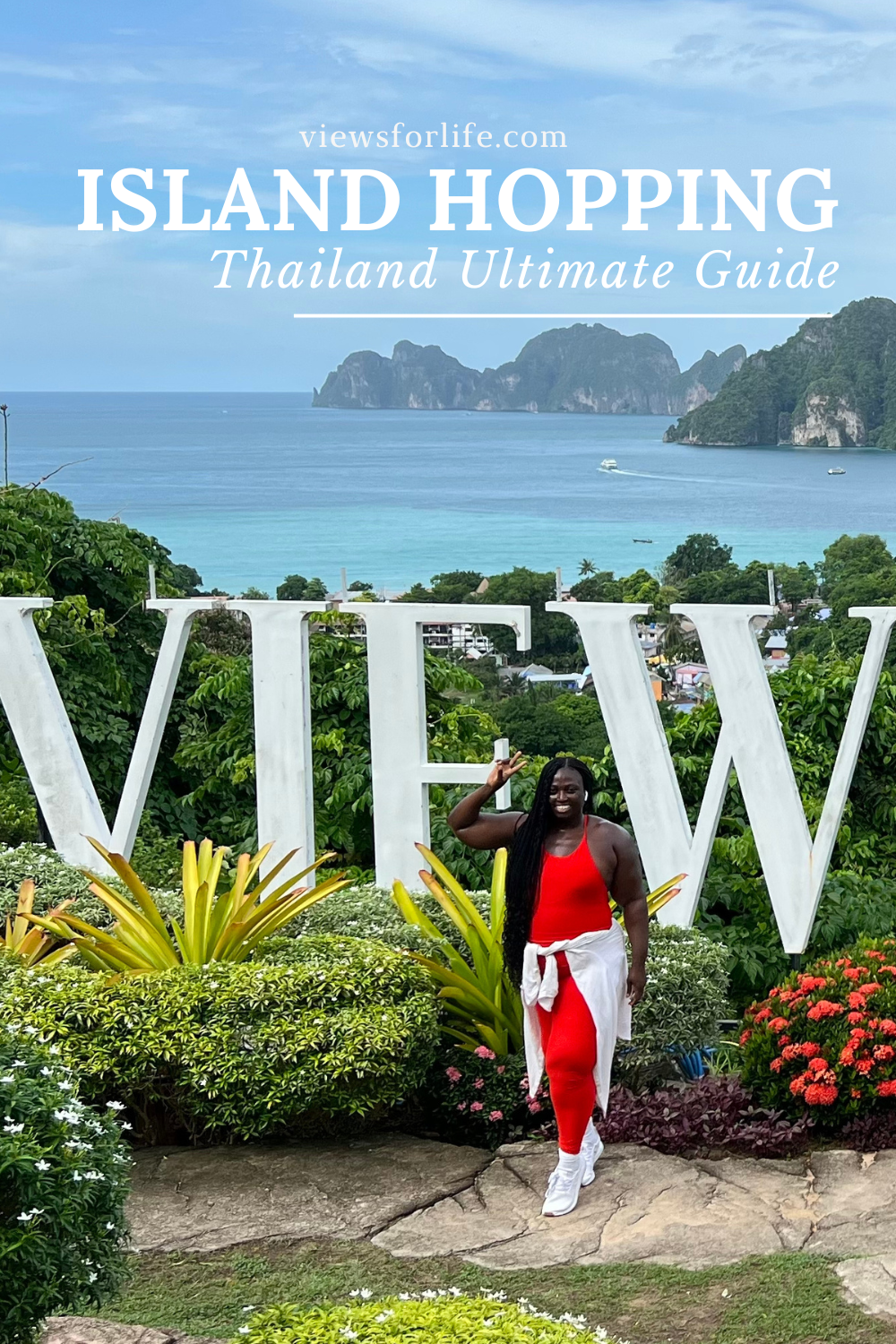
What We’ll Cover:
🗺 Explore great tours on Viator or Get Your Guide!
Best Time for Island Hopping in Thailand
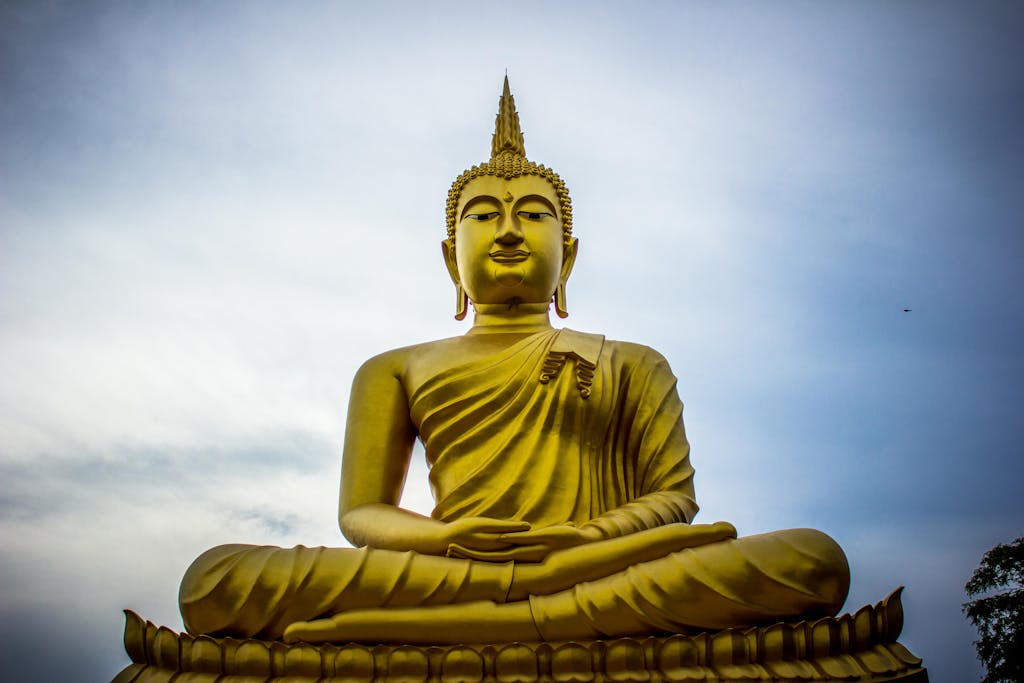
The best time for island hopping in Thailand is during the dry season, from November to April. Unfortunately, that was not when I went, so sacrifices were made.
The dry month’s weather is perfect for exploring ALL the islands, with sunny days and calm seas making ferry rides smooth. November to February is enjoyable, with pleasant temperatures and clear skies. March and April are still great, but it can get hotter, and you might encounter brief rain showers.
When I went during the monsoon season, from May to October, the weather was unpredictable, with heavier rainfall and rough seas. While some might enjoy the lush green landscapes and fewer crowds, be prepared for potential disruptions to travel plans.
Planning your island-hopping adventure during the dry season ensures the best weather and smoothest experience for all the best islands.
How to Plan Island Hopping Trip in Thailand
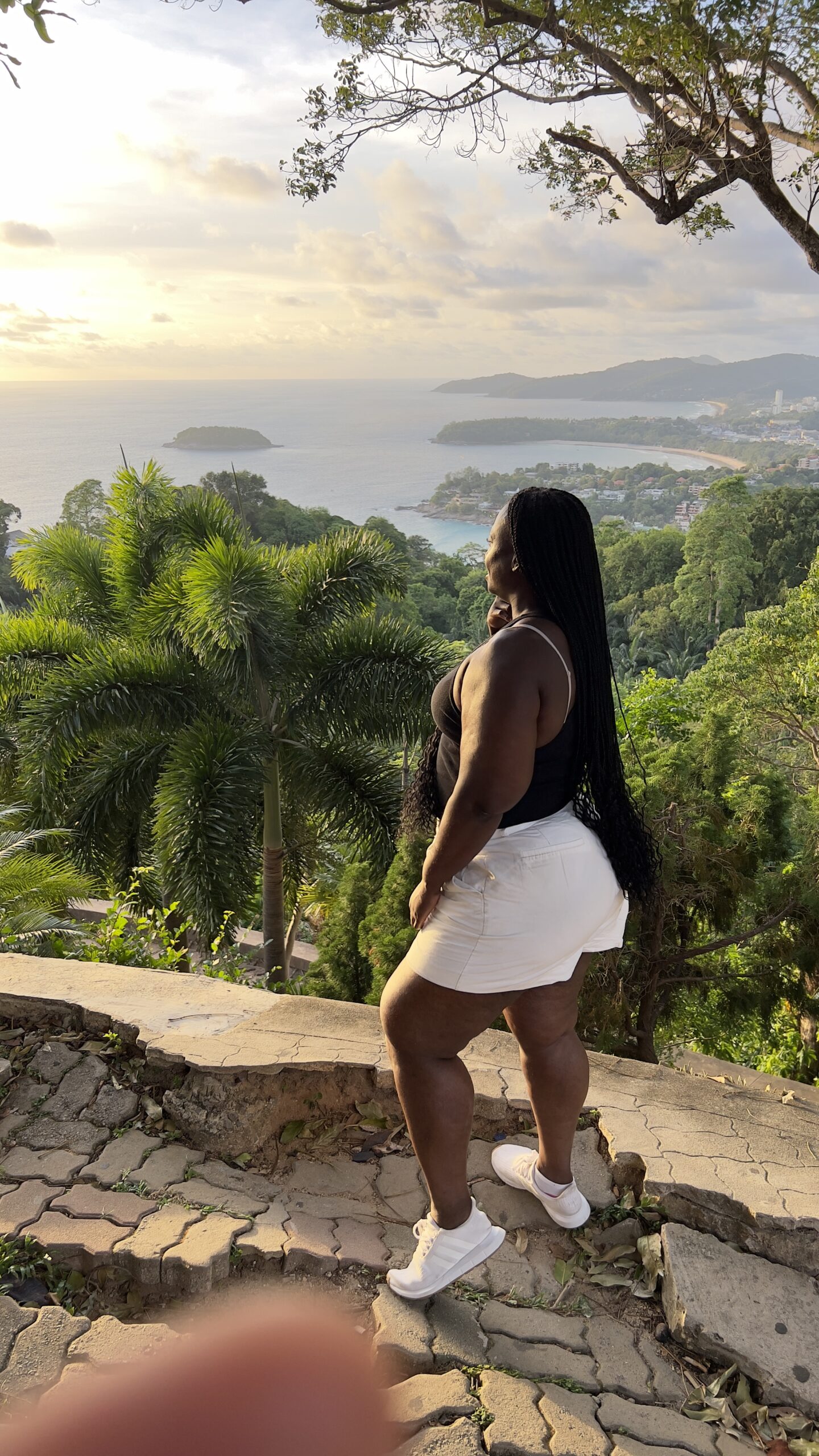
Planning an island hopping trip in Thailand is an exciting adventure. Here’s how I tackled it:
Research: I started by researching the various islands in Thailand to create a list of must-visit destinations. I looked into accessibility, activities, and accommodation options on each island.
Itinerary Creation: Next, I crafted a flexible itinerary based on the islands I wanted to visit and the activities I wanted to experience. I made sure to include buffer days for unexpected delays or spontaneous detours.
Transportation: I sorted out transportation options between islands, whether by ferry, speedboat, or domestic flights. Booking tickets in advance helped secure the best prices and schedules.
Accommodation: Finding accommodation was crucial, especially during peak seasons. I booked hotels, resorts, or guesthouses in advance, considering factors like location, amenities, and budget.
Packing Essentials: I made a packing list tailored to island hopping, including swimwear, sunscreen, lightweight clothing, and water-resistant gear. I also packed essentials like travel documents, medications, and a portable charger.
Budgeting: I set a budget for my trip, considering expenses like transportation, accommodation, meals, and activities. I researched average costs to ensure I had enough funds for the entire journey.
Safety Precautions: Prioritizing safety, I researched local customs, emergency contacts, and potential health risks in each destination. I also purchased travel insurance to provide peace of mind during my trip.
Flexibility: While planning was essential, I remained flexible and open to unexpected experiences. I embraced the spontaneity of island hopping, allowing myself to deviate from the itinerary if an exciting opportunity arose.
Thailand Islands Map
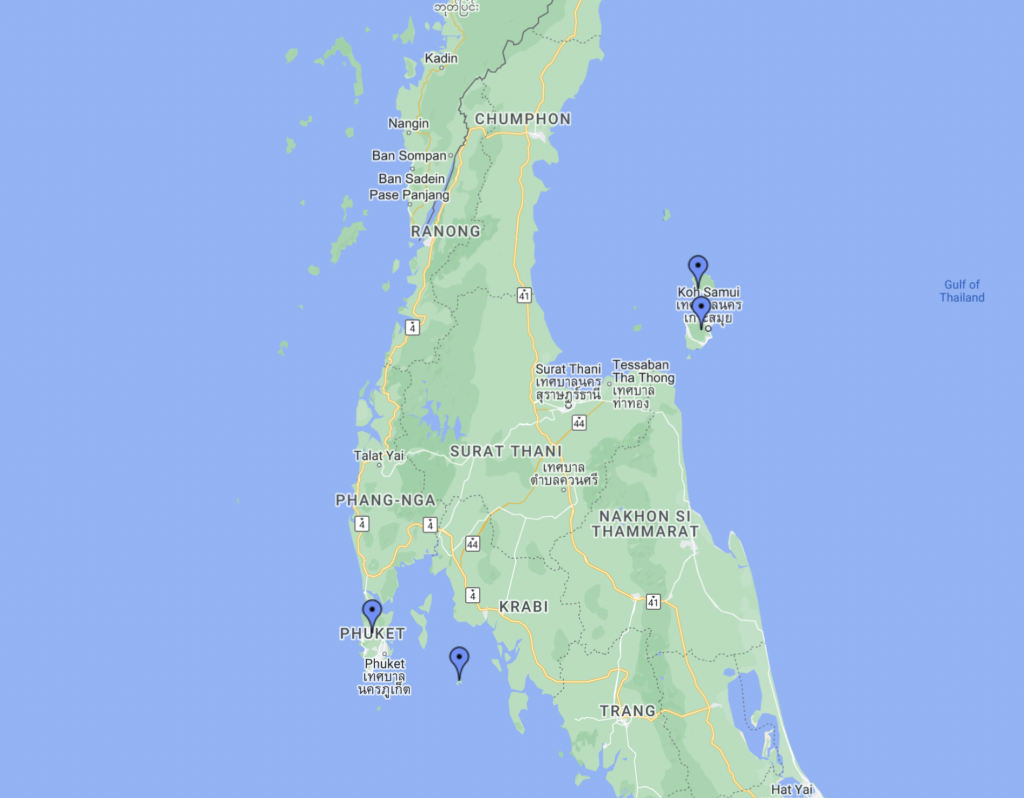
With the help of a map, traveling through Thailand’s islands was a breeze. Here’s how it came in handy:
Visual Guide: Maps provide a clear overview of the various islands scattered across Thailand’s coastlines. They helped me understand each island’s geographical layout and proximity, allowing me to plan my route efficiently. I used Google Maps!
Island Selection: The map helped me quickly identify famous islands like Phuket, Koh Samui, and Koh Phi Phi, as well as hidden gems off the beaten path. This helped me tailor my island-hopping itinerary to include a mix of well-known destinations and secluded paradises.
Transportation Routes: The map highlighted ferry routes, airports, and other transportation hubs, making it simple to chart my course between islands. I could quickly determine the most convenient and cost-effective way to travel from one island to the next.
Attractions and Activities: Each island was marked with attractions, beaches, and activities, allowing me to prioritize my must-see destinations. Whether I was seeking vibrant nightlife, pristine beaches, or cultural landmarks, the map guided me to the perfect spots.
Thailand Island Hopping by Ferry, Bus, Plane
There are several ways to travel Thailand’s islands: ferry, bus, and plane. It was more straightforward and uncomplicated than I thought, adding an extra layer of adventure to my trip. Here’s how I did it:
Ferry Travel
Ferry travel between islands was scenic and convenient. I booked my tickets through reliable providers like Thai Ferry and Seatran Ferry, ensuring hassle-free journeys between destinations. However, my hotel was sometimes accommodating in arranging ferries and providing detailed information. Ferry tickets typically range from $10 to $30 USD, depending on the route and class of service.
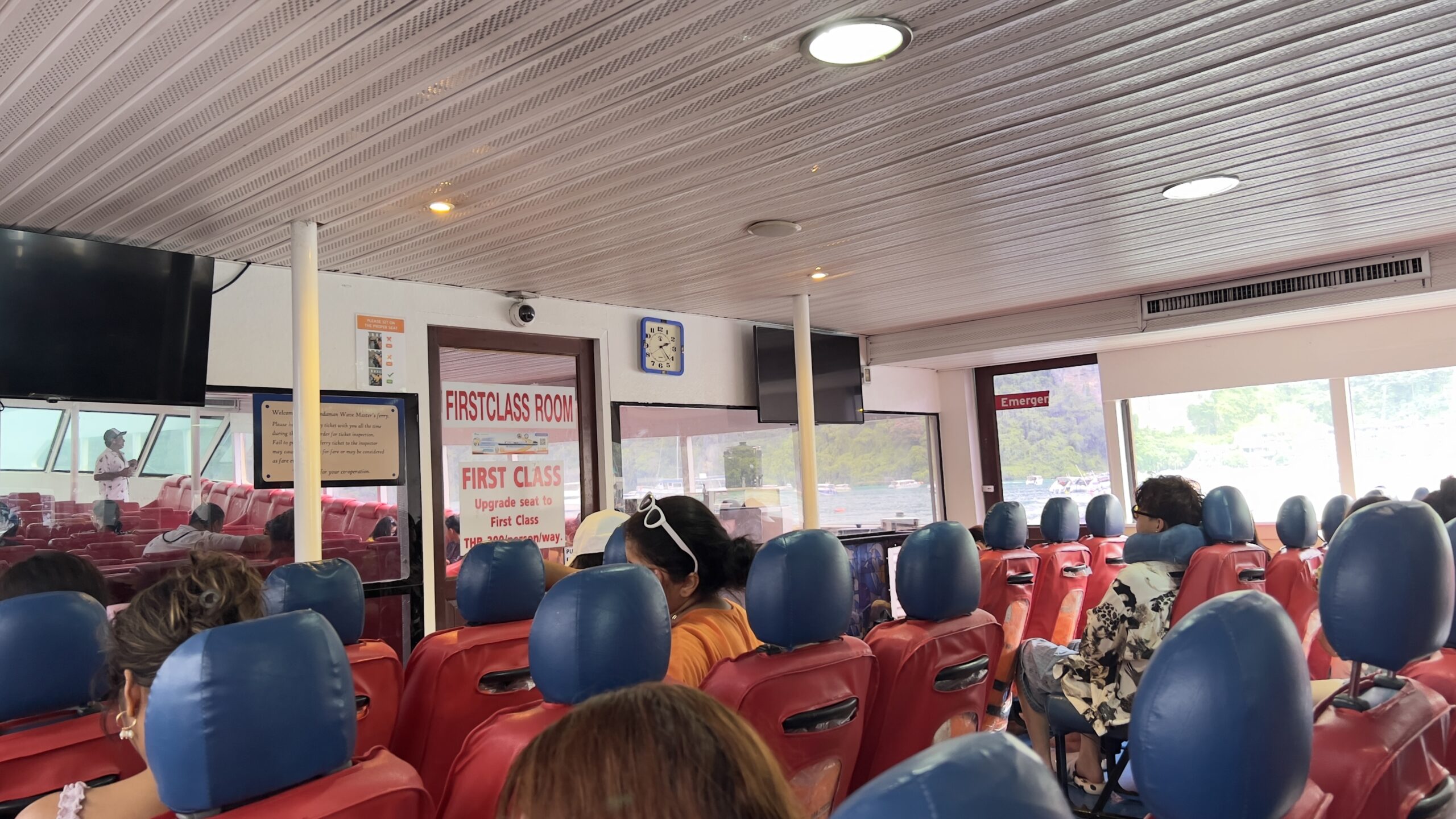
Bus Connections
Buses were a cost-effective option for overland travel. Companies like 12Go Asia offered convenient online booking for bus tickets, allowing me to explore mainland Thailand and reach ferry terminals easily. Bus fares varied but generally ranged from $5 to $20 USD, depending on the distance traveled. Again, my hotel sometimes accommodated in arranging ferries and providing detailed information.
Air Travel
When time was of the essence, domestic flights provided quick transfers between major cities and islands. Websites like Skyscanner and Expedia helped me find affordable flights and secure my seat in advance. Domestic flights within Thailand typically cost between $50 to $150 USD, depending on the route and booking time.
Getting Around The Islands
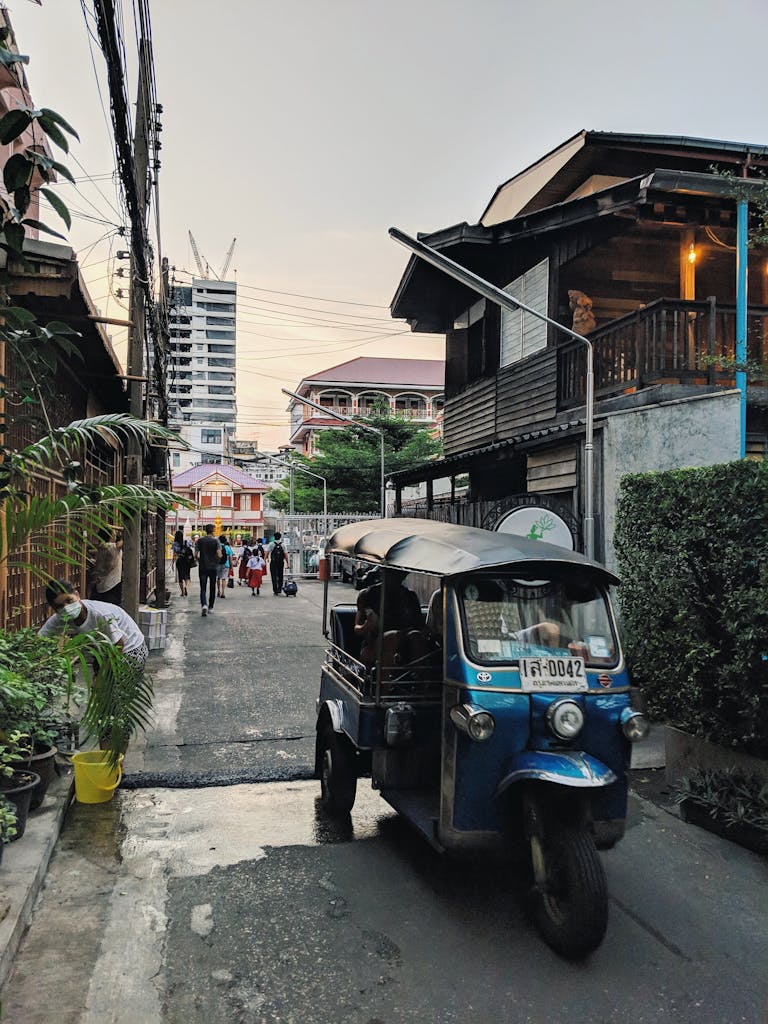
Local Transport: To explore each island, I relied on local transportation options like taxis, tuk-tuks, and motorbike rentals. Booking apps like Grab helped secure rides, while motorbike rentals cost around $5 to $10 USD per day and offer flexibility and freedom to roam.
Island Tours: I joined island tours organized by local operators. Websites such as Viator and GetYourGuide offered a variety of tours, from snorkeling excursions to cultural experiences. Prices varied but typically ranged from $20 to $50 USD per person.
Renting Bicycles: For a leisurely exploration, I rented bicycles from local shops, enjoying the scenic routes and laid-back atmosphere. Rentals were affordable, costing around $3 to $5 USD per day, and provided a fun way to discover hidden gems on the islands.
My Thailand Island Hopping Itinerary
Here’s a glimpse into my Thailand island-hopping itinerary to help get you going with your travel plans that consist of destinations, routes, transportation tips:
Fly Bangkok to Chiang Mai
Fly Chiang Mai to Krabi
Bus and Ferry to Koh Lanta
Ferry to Phi Phi Island
Ferry to Phuket
Fly to Bangkok
Traveling from Bangkok to Chiang Mai
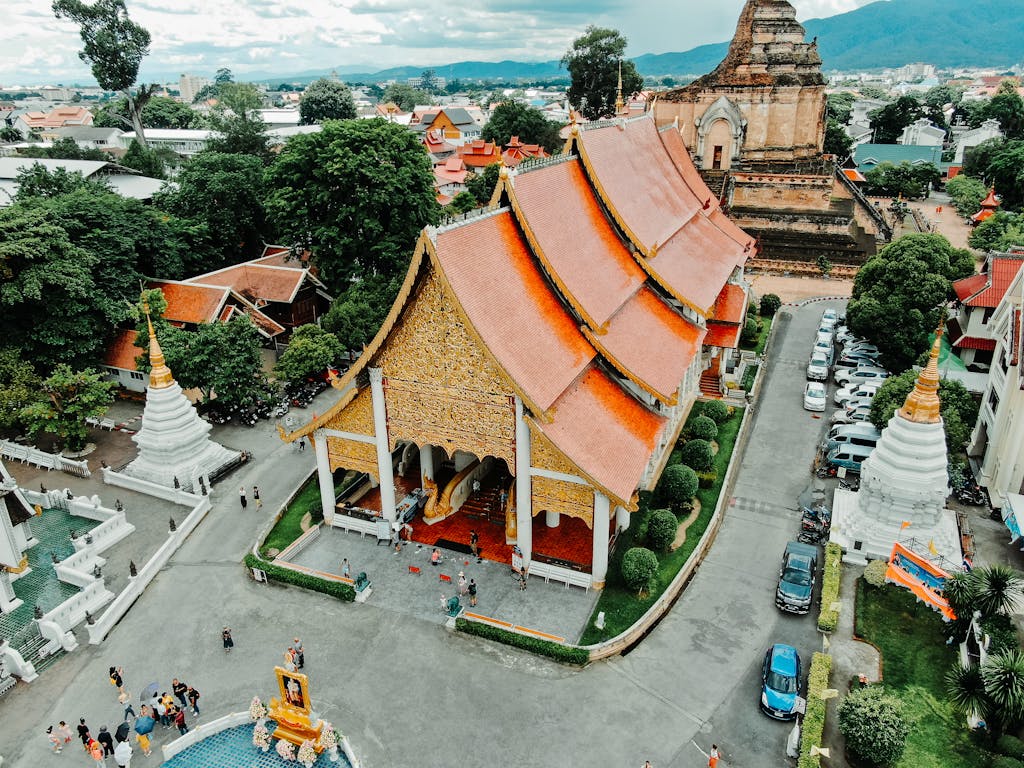
My journey from Bangkok to Chiang Mai was an adventure in itself. While many opt to start island hopping from Bangkok to Phuket, I chose a different route. Instead, I embarked on an overnight train ride spanning 12 hours, immersing myself in the rhythmic clickety-clack of the tracks and the mesmerizing scenery outside my window.
Arriving in Chiang Mai, I was greeted by the city’s vibrant energy and rich cultural heritage. From tasty night markets to temples tucked away in ancient alleyways, Chiang Mai offered experiences waiting to be discovered.
After a few days of exploring the city’s charm, I continued, eager to enter Thailand’s island paradise.
Best Thai Islands to Visit
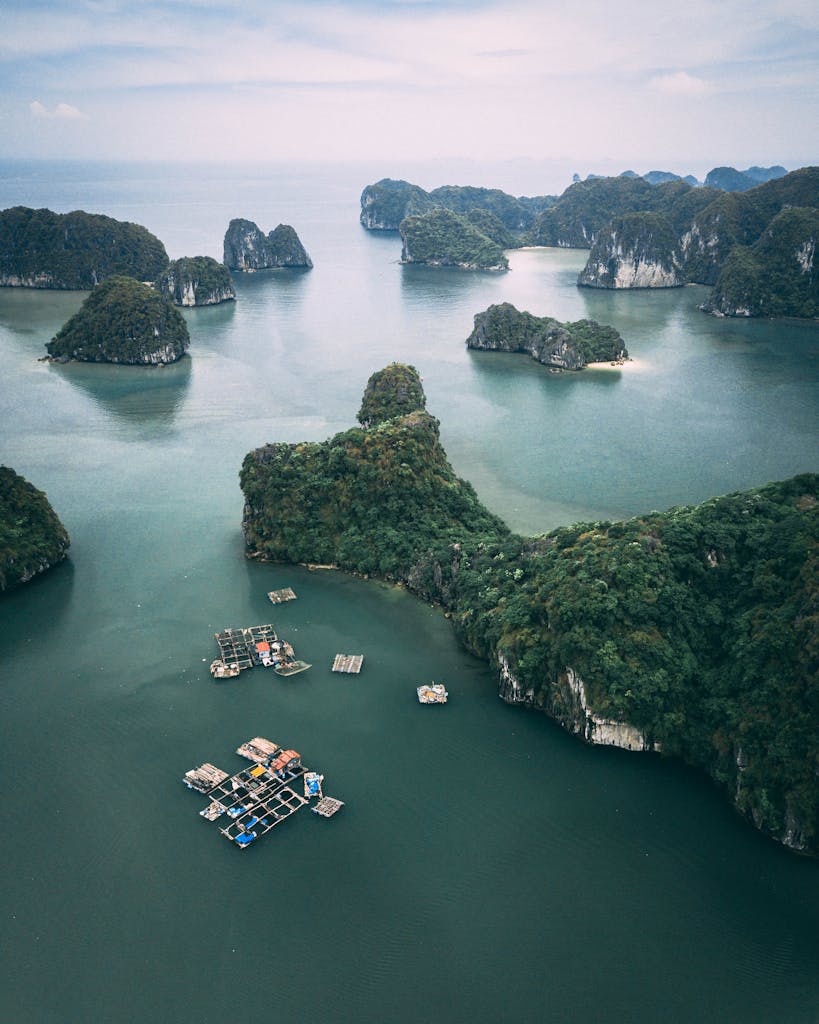
Here are my top recommendations for your Thailand island-hopping adventure, tailored to different preferences and travel styles:
Luxury Island Hopping: Indulge in opulence and tranquility at resorts on islands like Koh Samui or Phuket, where you will find lavish amenities and stunning views.
Family-Friendly: Choose islands with calm waters and family-friendly activities, like Koh Lanta or Koh Chang, where you can create unforgettable memories with your loved ones.
Backpacking: Immerse yourself in the backpacker vibe of Koh Tao or Koh Phi Phi, where budget accommodations, lively atmosphere, and breathtaking scenery await adventurous travelers.
Island Hopping Solo: Discover the freedom of solo travel on islands like Koh Phangan or Koh Samet, a perfect blend of solitude, adventure, and opportunities to meet fellow travelers.
Budget Travelers: Stretch your budget on islands like Koh Lipe or Koh Tao, known for affordable accommodations, delicious street food, and a laid-back atmosphere.
Nightlife: Dance the night away on islands like Koh Phi Phi or Koh Phangan, renowned for their vibrant nightlife scenes and beach parties that last until dawn.
Great Snorkeling, Diving, and Water Activities: Explore the underwater wonders of islands like Koh Tao or Koh Lanta, boasting some of Thailand’s best snorkeling and diving sites.
Relaxing: Unwind in serenity on islands like Koh Samui or Koh Lipe, where pristine beaches, crystal-clear waters, and breathtaking sunsets provide the perfect backdrop for relaxation and rejuvenation.
Island hopping Thailand safety tips

When island hopping in Thailand, safety should be a priority. While ferry rides are often affordable, it’s essential to consider their safety record. Before boarding, inspect the ferry for adequate lifeboats and ensure it’s not overcrowded. Trust your instincts; if unsure, opt for a different ferry company.
While Thai people are known for their friendliness, exercise caution and use your best judgment. Additionally, remember that Thailand has strict drug laws, so avoid taking any risks. Stay vigilant and prioritize your safety while enjoying your island-hopping adventure.

Thailand Island Hopping Pro-Tips
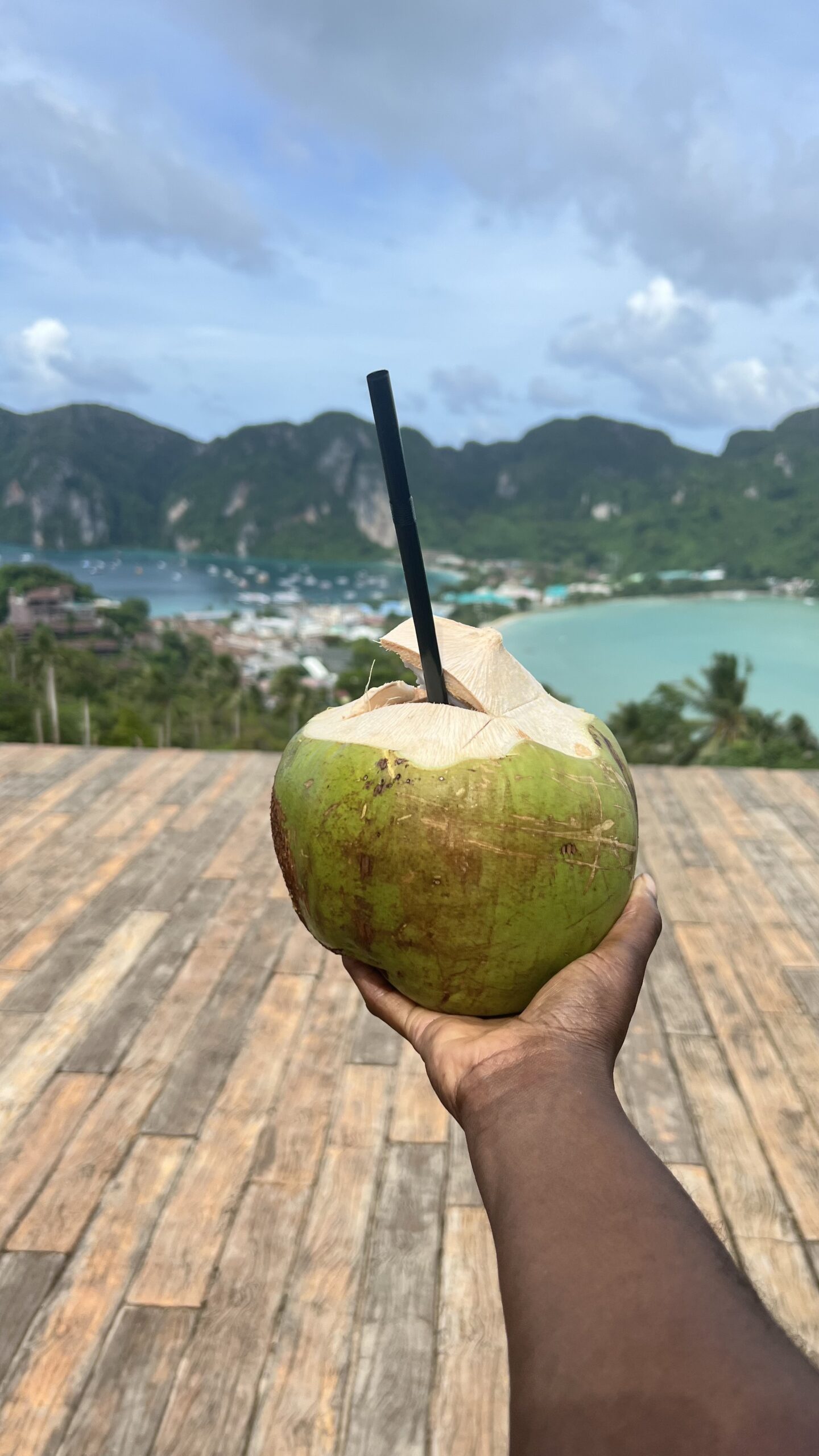
Plan Ahead: Research your destinations, transportation options, and activities in advance to make the most of your trip.
Flexible Schedule: Allow your itinerary to accommodate unexpected delays or opportunities.
Pack Light: Travel with essentials and lightweight clothing to make moving between islands easier.
Budget Wisely: Set a budget and stick to it, considering expenses like transportation, accommodation, and activities.
Stay Hydrated: Keep hydrated, especially in the tropical heat, to stay energized and healthy throughout your journey.
Respect Local Culture: Be mindful of local customs, temple attire for women, and traditions, and always respect the communities you visit.
Safety First: Prioritize your safety by checking ferry conditions, avoiding risky activities, and always staying vigilant.
Embrace the Experience: Embrace the beauty and diversity of Thailand’s islands, and be open to new experiences and adventures along the way.
Thailand Island Hopping Packing Essentials
- Lightweight Clothing: Pack breathable and quick-drying clothing suitable for hot and humid weather.
- Swimwear: Don’t forget your swimsuits for enjoying the beautiful beaches and water activities.
- Sunscreen: Protect your skin from the intense tropical sun with a high SPF sunscreen.
- Hat and Sunglasses: Shield yourself from the sun’s glare with a hat and UV-protective sunglasses.
- Water Bottle: Stay hydrated throughout the day by carrying a reusable water bottle.
- Insect Repellent: Ward off mosquitoes and other bugs with insect repellent, especially during the evenings.
- Travel Documents: Keep your passport, travel insurance, and other important documents in a waterproof pouch.
- Camera: Capture memories of your island-hopping adventure with a waterproof camera or phone.
- Flip-Flops/Sandals: Comfortable footwear like flip-flops or sandals are perfect for beach days and exploring.
- Portable Charger/Adapters: Ensure your devices stay charged for navigation, communication, and capturing photos.
Frequently Asked Questions For Island Hopping in Thailand
Which are the best islands to visit in Thailand?
Thailand boasts numerous stunning islands, each with its unique charm. Some popular ones include Phuket, Koh Phi Phi, Koh Samui, Koh Lanta, and Koh Tao.
What is the best time of year to go island hopping in Thailand?
The best time for island hopping is during the dry season, from November to April when the weather is generally sunny, and the seas are calm. However, it’s essential to avoid the monsoon season, which runs from May to October.
How do I travel between islands in Thailand?
You can travel between islands in Thailand by ferry, speedboat, or domestic flights. Ferry services are the most common and offer various budget and luxury options.
Are there any safety considerations for island hopping in Thailand?
While island hopping is generally safe, it’s essential to prioritize safety by checking ferry conditions, avoiding risky activities, and being cautious of potential scams.
What activities can I enjoy while island hopping in Thailand?
Island hopping in Thailand offers a range of activities, such as snorkeling, diving, kayaking, exploring pristine beaches, visiting cultural attractions, and indulging in delicious Thai cuisine.
What should I pack for island hopping in Thailand?
Packing essentials include lightweight clothing, swimwear, sunscreen, insect repellent, a hat, sunglasses, a reusable water bottle, travel documents, a camera, comfortable footwear, and a portable charger.
How can I book accommodations for island hopping in Thailand?
Accommodations can be booked in advance through various online platforms such as booking.com, Agoda, or Airbnb. It’s advisable to book accommodations early, especially during peak seasons.
Leave a Reply
© copyright 2024 Congologie Studios